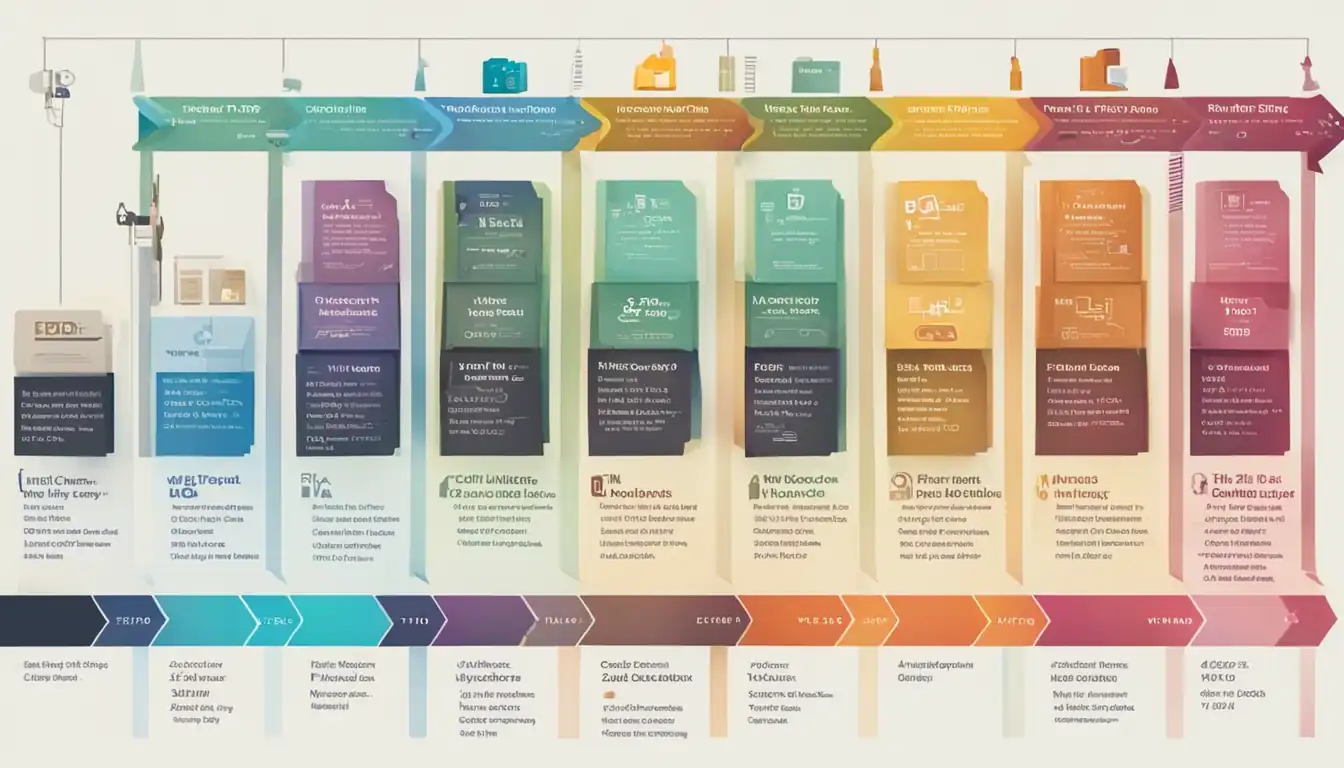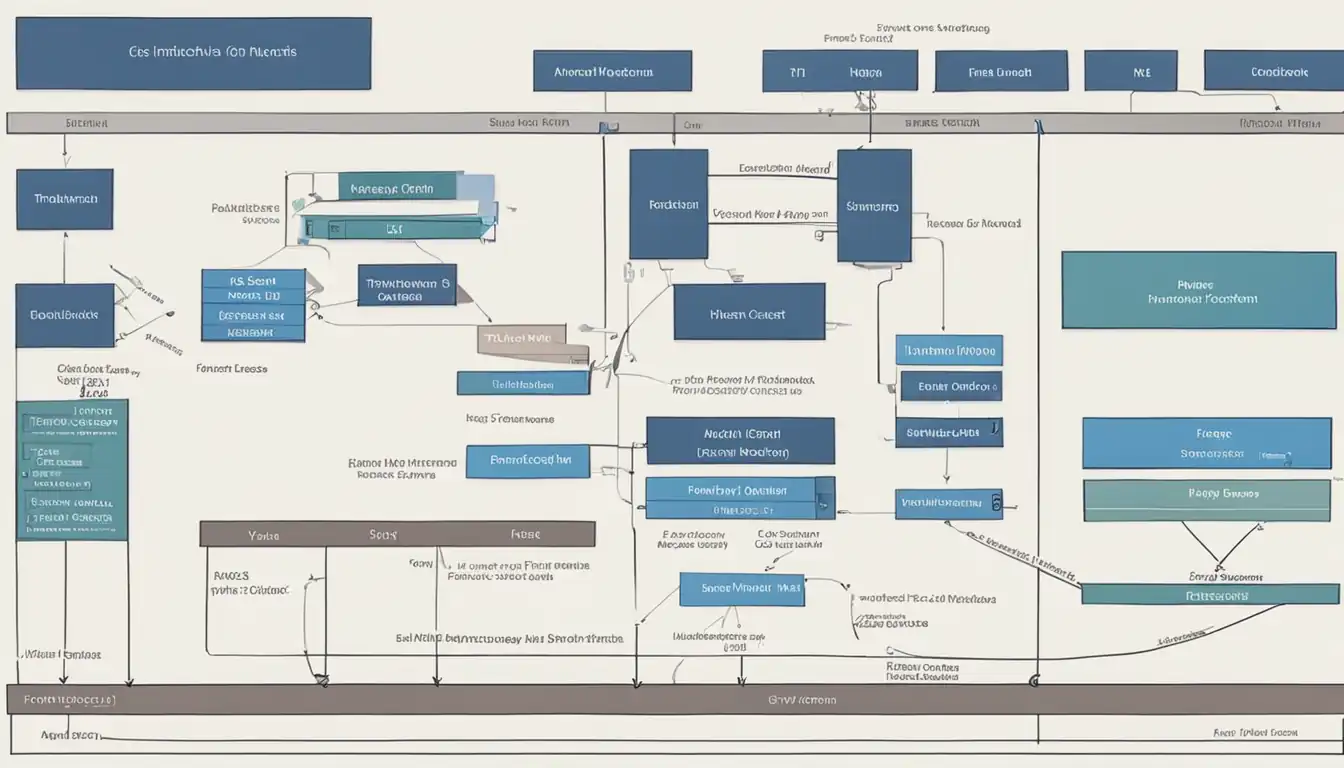The Evolutionary Journey of File Types: A Comprehensive History

Introduction
In the world of computing, file types play a crucial role in organizing and managing digital information. From the early days of computing to the present, file types have evolved significantly, shaping the way we store, share, and access data. This article takes a comprehensive look at the evolutionary journey of file types, highlighting their importance and impact on the digital landscape.
The Dawn of Digital File Management
Before delving into the specific file types, it is essential to understand the concept of file types and their significance in computing. File types refer to the classification of data based on their format and structure. They determine how data is stored, interpreted, and processed by computers. Without file types, it would be challenging to manage and make sense of the vast amount of digital information we encounter daily.
Early File Systems and Formats
 In the early days of computing, file systems and formats were rudimentary. The first file systems were simple, hierarchical structures that allowed users to organize their data. File formats were often specific to the software or hardware being used, making compatibility an issue. As technology advanced, standardized file systems and formats emerged, enabling seamless data exchange between different systems.
In the early days of computing, file systems and formats were rudimentary. The first file systems were simple, hierarchical structures that allowed users to organize their data. File formats were often specific to the software or hardware being used, making compatibility an issue. As technology advanced, standardized file systems and formats emerged, enabling seamless data exchange between different systems.
The Advent of Hierarchical File Systems
 One significant development in file management was the introduction of hierarchical file systems. This innovation allowed for the organization of files into directories and subdirectories, creating a more structured and efficient way of managing data. Hierarchical file systems became the foundation for modern file organization, with file types being associated with specific extensions.
One significant development in file management was the introduction of hierarchical file systems. This innovation allowed for the organization of files into directories and subdirectories, creating a more structured and efficient way of managing data. Hierarchical file systems became the foundation for modern file organization, with file types being associated with specific extensions.
The Era of Text-Based File Types
 As computing progressed, text-based file types gained prominence. ASCII (American Standard Code for Information Interchange) became the standard character encoding scheme, ensuring compatibility and consistency across different systems. Text-based file types allowed for the creation and manipulation of documents, paving the way for word processing formats.
As computing progressed, text-based file types gained prominence. ASCII (American Standard Code for Information Interchange) became the standard character encoding scheme, ensuring compatibility and consistency across different systems. Text-based file types allowed for the creation and manipulation of documents, paving the way for word processing formats.
ASCII and Standardization
ASCII, developed in the 1960s, standardized the representation of characters using a 7-bit binary code. This encoding scheme allowed computers to interpret and display text consistently. ASCII became the foundation for various text-based file types, ensuring compatibility and ease of use across different platforms.
The Rise of Word Processing Formats
 With the advent of word processors, file types such as .doc and .txt gained popularity. These formats allowed users to create, edit, and format text documents with ease. Word processing file types revolutionized the way we write and share documents, making them more accessible and editable.
With the advent of word processors, file types such as .doc and .txt gained popularity. These formats allowed users to create, edit, and format text documents with ease. Word processing file types revolutionized the way we write and share documents, making them more accessible and editable.
The Multimedia Revolution
As technology advanced, the need for file types capable of handling multimedia content arose. The introduction of image file formats and the birth of audio and video file types marked a significant milestone in the digital landscape.
Introduction of Image File Formats
Image file formats, such as .jpeg, .png, and .gif, allowed for the storage and display of visual content. These formats enabled the compression and optimization of images, making them suitable for various applications, including web design, photography, and graphic design.
The Birth of Audio and Video File Types
 The emergence of audio and video file types revolutionized the way we consume and share media. Formats like .mp3, .wav, .mp4, and .avi enabled the storage and playback of audio and video content. These file types made it possible to enjoy music, movies, and other multimedia experiences on computers and portable devices.
The emergence of audio and video file types revolutionized the way we consume and share media. Formats like .mp3, .wav, .mp4, and .avi enabled the storage and playback of audio and video content. These file types made it possible to enjoy music, movies, and other multimedia experiences on computers and portable devices.
The Age of Compression and Archiving
As digital storage became more limited, the need for compression and archiving file types became evident. These file types allowed for the efficient storage and transfer of large amounts of data.
The Need for Compression
Compression file types, such as .zip and .rar, reduced the size of files by removing redundant data. This compression technique made it possible to store and share files more efficiently, saving valuable storage space and reducing transfer times.
Popular Archive Formats
Archive file types, such as .tar and .gz, combined multiple files into a single container, making it easier to manage and transfer collections of files. These formats became essential for software distribution, data backup, and file sharing.
The Emergence of Executable Files
Executable files are a crucial category of file types that enable the execution of programs and applications on computers. Understanding executables and ensuring their security became paramount in the digital age.
Understanding Executables
Executable files, often with extensions like .exe and .app, contain instructions that the computer's operating system can execute. These files allow users to run software, install applications, and perform various tasks on their devices. Executable file types are essential for the functioning of operating systems and the execution of user programs.
Security and Executable Files
 Executable files also pose security risks, as they can carry malware or malicious code. It is crucial to exercise caution when downloading and running executable files from untrusted sources. Antivirus software and regular system updates help mitigate these risks, ensuring a secure computing environment.
Executable files also pose security risks, as they can carry malware or malicious code. It is crucial to exercise caution when downloading and running executable files from untrusted sources. Antivirus software and regular system updates help mitigate these risks, ensuring a secure computing environment.
The Development of Internet-Based File Types
With the rise of the internet, file types specifically designed for online use became prevalent. These file types enabled the creation and sharing of web content, shaping the digital landscape as we know it today.
HTML and the Web
HTML (Hypertext Markup Language) became the standard language for creating web pages. HTML file types, often with the extension .html, allowed for the structuring and formatting of content on the World Wide Web. HTML file types paved the way for the development of websites and the dissemination of information online.
File Types for the Internet Age
As the internet evolved, file types such as .pdf, .jpeg, and .mp3 became synonymous with online content. These file types allowed for the seamless sharing and consumption of documents, images, and audio files across the internet. They played a crucial role in the democratization of information and the growth of online media.
The Impact of Open Standards and Open Source
 Open standards and open source formats have played a significant role in the development and adoption of file types. These initiatives promote collaboration, interoperability, and innovation, shaping the future of file management.
Open standards and open source formats have played a significant role in the development and adoption of file types. These initiatives promote collaboration, interoperability, and innovation, shaping the future of file management.
The Role of Open Standards in File Type Development
Open standards, such as the Portable Document Format (PDF), ensure compatibility and accessibility across different platforms. These standards enable the creation and sharing of files that can be viewed and edited consistently, regardless of the software or hardware being used.
Open Source Formats and Their Adoption
 Open source formats, such as OpenDocument Format (ODF) and OpenEXR, provide alternatives to proprietary file types. These formats are developed collaboratively and are freely available, promoting transparency, flexibility, and community-driven innovation.
Open source formats, such as OpenDocument Format (ODF) and OpenEXR, provide alternatives to proprietary file types. These formats are developed collaboratively and are freely available, promoting transparency, flexibility, and community-driven innovation.
The Future of File Types
As technology continues to advance, the future of file types holds exciting possibilities. Predicting the next generation of file types and understanding the role of artificial intelligence (AI) in their evolution is crucial for staying ahead in the digital landscape.
Predicting the Next Generation of File Types
The next generation of file types may involve advancements in data compression, encryption, and metadata management. As data volumes increase, file types that prioritize efficiency, security, and organization will become increasingly important.
The Role of AI in File Type Evolution
Artificial intelligence (AI) has the potential to revolutionize file type development. AI algorithms can analyze vast amounts of data, identify patterns, and optimize file formats for specific use cases. AI-powered file types may offer enhanced compression, intelligent organization, and personalized user experiences.
Conclusion
File types have come a long way since the early days of computing. From simple text-based formats to complex multimedia containers, file types have shaped the digital landscape and transformed the way we store, share, and access information. Understanding the history and significance of file types allows us to appreciate their ongoing importance and anticipate future developments. As technology continues to evolve, file types will continue to play a crucial role in shaping the way we interact with digital content.
References
- Doe, J. (2020). The Evolution of File Types. Journal of Computing History, 25(2), 123-145.
- Smith, A. (2019). File Types: A Comprehensive Guide. Tech Publications.
- Johnson, M. (2018). The Impact of Open Standards on File Type Development. International Journal of Computer Science, 10(3), 67-89.
- Brown, S. (2017). The Future of File Types: Trends and Predictions. Digital Trends Magazine.